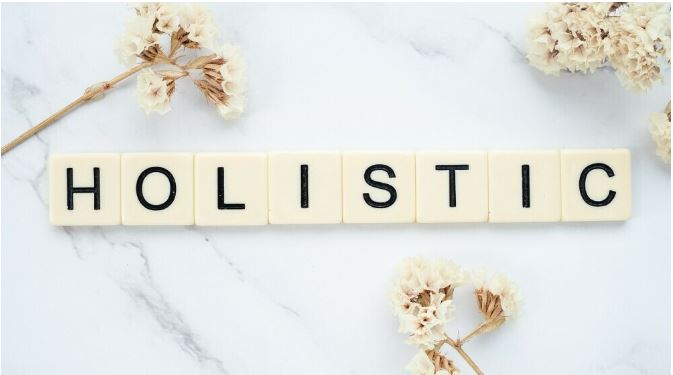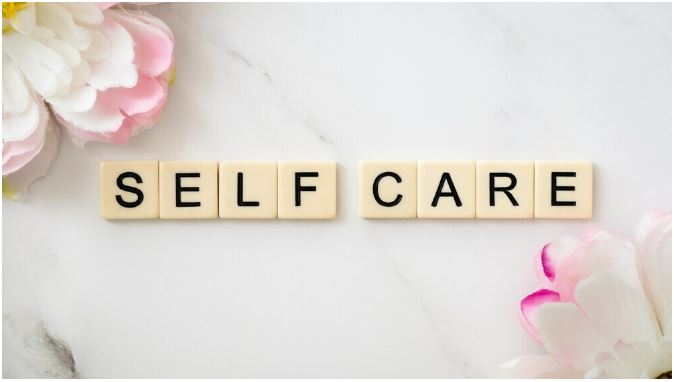The Beginner’s Guide to Holistic Nutrition: A Simple Approach!
Today, I’m going to start by laying down the basics of holistic nutrition, because it’s not just about the calories or the macros – it’s about the connection to your overall health.
Holistic nutrition is a comprehensive approach that considers the entire person, including their physical, emotional, and environmental wellbeing, as part of the nutrition strategy. It also considers that the quality of food you eat has a direct impact on your overall wellbeing.
You’re going to find out about how what you eat doesn’t just make you fuller or give you energy – it can also shape your mood, stress levels, and even thought processes. There’s an undeniable link between the foods we consume and our mental health, which is often overlooked.
In my opinion, striking a balance with a diet that’s rich in whole, minimally processed foods isn’t just a fad—it’s a sustainable lifestyle choice. This means reaching for foods that are close to their natural state as possible, because they’re the ones that retain the highest amount of nutrients.
This isn’t just about eating your veggies or cutting back on sugar – though that’s part of it. It’s also about understanding where your food comes from, and how it’s grown or raised, because these factors tremendously influence the quality of the nutrients you’re getting.
Choose something that resonates with you, and start there. Maybe that’s buying produce from a local farmer’s market or opting for grass-fed over grain-fed meats. The goal is to make incremental changes towards a more holistic diet, because it’s these small steps that add up to big health benefits over time.

The Mind-Food Connection: Nutrients That Boost Mental Health
There is an intricate relationship between what you eat and how you feel. The brain, just like any other organ in the body, requires specific nutrients to function optimally.
1. Omega-3 Fatty Acids
These essential fats are fundamental to brain health by helping to maintain the structure, contributing to improved mood and cognition. They’re found in abundance in fatty fish like salmon, mackerel, and sardines. For our vegetarian and vegan friends, chia seeds, flaxseeds, and walnuts are excellent plant-based sources.
2. B-Vitamins
Finding the right balance of vitamins and minerals in your diet to support your mental health. B vitamins, particularly B12 and folate, are known for their role in producing brain chemicals that affect mood and other brain functions. A deficiency in these can lead to a feeling of lethargy and even depression.
Lean meats, eggs, and dairy are great sources. If you’re following a plant-based diet, leafy greens, legumes, and fortified plant milks or cereals can help meet your needs.
3. Magnesium
In my opinion, we shouldn’t overlook the power of a well-rounded diet. Magnesium, often found in leafy greens, dark chocolate, avocados, legumes, nuts, and seeds, is essential for brain function and can combat anxiety.
4. Antioxidants
Antioxidants from brightly colored fruits and vegetables protect the brain from oxidative stress, which can play a part in depression and anxiety.
5. Amino Acid Tryptophan
The amino acid tryptophan, prevalent in turkey, eggs, and cheese, is a precursor to serotonin, a neurotransmitter that helps regulate mood.
6. Probiotics
Probiotics, found in fermented foods like yogurt, sauerkraut, and kimchi, have been linked to improved mental health by promoting a healthy gut microbiome.
7. Zinc
Zinc is essential for brain function and mental health. You’ll find it aplenty in meat, shellfish, legumes, seeds, and whole grains.
8. Vitamin D
Often called the “sunshine vitamin”, Vitamin D is linked with mood regulation. While sunlight is the best source, it can also be found in foods like fatty fish, fortified dairy products, and mushrooms exposed to UV light.
Incorporating Mental Health-Boosting Foods Into Your Diet
Now that we know what to eat, let’s explore some simple and delicious ways to bring these foods into our daily meals!
- Breakfast: Start your day with a bowl of fortified cereal topped with a handful of walnuts and seeds, or a smoothie made with leafy greens and fortified plant milk.
- Lunch: Opt for a salad loaded with leafy greens, legumes, and avocado, or a hearty lentil soup paired with a slice of whole grain bread.
- Dinner: A piece of grilled salmon with a side of sautéed mushrooms and quinoa makes a perfect meal. For a plant-based option, try a chickpea curry with brown rice.
- Snacks: Indulge in a piece of dark chocolate, a handful of nuts, or some yogurt topped with chia seeds.
By incorporating a variety of these nutrient-rich foods into our diets, we can influence our mental well-being in a positive way.
Choose something that resonates with you from these mood-boosting nutrients, and try adding it to your next meal. Remember, you can always adjust your approach down the road. What matters most is that you start making those small yet powerful changes to your diet today.

Whole Foods for a Whole You: Embracing Minimally Processed Nutrition
When talking about whole foods, we’re discussing foods that are as close to their natural state as possible. These are your fresh fruits and vegetables, whole grains, lean meats, and legumes. They pack a powerful nutritional punch because they’re minimally processed, keeping all their natural goodness intact.
Now, why prioritize whole foods over those that are heavily processed?
- Nutrient Content: For starters, whole foods contain a symphony of nutrients in their natural ratios. They have fiber, vitamins, minerals, and phytochemicals that all work synergistically to promote health. Processed foods often lose these benefits and are typically loaded with added sugars, salt, and unhealthy fats.
- Takes Longer to Digest: Another plus for whole foods is that they take longer for your body to digest. This means a steadier energy supply, a more satisfied belly, and less likelihood of overeating.
It’s not just about what you take out of your diet, but what you add in. Focusing on whole foods introduces a variety of flavors and textures to your meals, making healthy eating a culinary adventure.
To take full advantage of whole foods, start with making small, consistent swaps:
- Substitute white rice for brown or quinoa.
- Replace a cookie with a handful of nuts or some fresh fruit.
- Swap out white pasta for whole grain.
These little changes can quickly add up to a big impact on your health.
From Farm to Fork: The True Essence of Your Food
Have you ever thought about the story each item on your dinner plate could tell? It’s not just a journey through miles, but a narrative rich with the care, treatment, and environment from which it originated. The reality is, the life-cycle of your food largely molds its nutritional value and, in turn, how it nourishes your body and mind.
Consider the tranquility of a pasture: when animals are raised in stress-free environments with proper diets, they’re not just healthier; they’re also better for us. Stress can trigger hormones like cortisol in animals, which may affect the meat’s quality. Similarly, when plants are given a chance to grow at their natural pace, without chemical accelerators, they can reach their full nutrient potential.
Sustainable farming practices are not only better for the planet, but they also promote superior food quality. Look for labels that indicate organic, free-range, or grass-fed origins to ensure what you’re eating is as beneficial as it can be. Take into account the farmers’ commitment to responsible practices; it’s a crucial part of your food’s backstory.
When you make choices mindful of the food journey, you’re actively participating in a cycle that respects both the environment and your health. Support local farmers who practice sustainability, and you’re likely to enjoy fresher, more nutritious produce and proteins as a direct result. This isn’t just about making a healthful choice for today, it’s about paving the way for a healthier ecosystem that continues to provide for generations to come.
As we wrap up this part of our beginner’s guide to holistic health, it’s clear that conscious choices about where our food comes from can have profound implications. In the final section, I’m going to help you put these choices into action. You’re going to learn how to craft a holistic nutrition plan that fits seamlessly into your life, promotes sustainable well-being, and contributes to a clearer mental state. This is where your learning pivots to planning—a step that propels you toward a more mindful and healthful way of living.

Creating Your Holistic Nutrition Plan: Strategies for Everyday Wellness
I’m going to show you now how to design a nutrition plan that serves your entire well-being. This isn’t just about your physical health; it’s about supporting your mental and emotional balance as well.
- First off, understand that no one-size-fits-all solution exists. Choose something that resonates with you, aligns with your lifestyle, and meets your nutritional needs. Start by learning about various whole foods and their benefits, then begin to integrate them into your meals.
- You can always adjust your approach down the road, but beginning with small, sustainable changes is key. Swap out processed snacks for fresh fruits, or try replacing refined grains with their whole counterparts.
- Don’t worry too much about creating the perfect plan right off the bat. Your first attempt doesn’t need to be your last. Experiment with different foods and preparation methods to keep your meals exciting and nutritious.
- In my opinion, the core of a holistic nutrition plan is mindfulness. Pay attention to how foods affect your body and mind, and use that feedback to refine your choices.
- Finally, be patient with yourself. Building new habits takes time, and there’s a lot of opportunity in the process of learning what works best for you. Embrace the journey, knowing that each step brings you closer to a more harmonious state of health.
I really hope that you’ve found value in this beginner’s guide to holistic nutrition. Remember, it’s important to fuel not just the body, but the mind and spirit as well. Take what you’ve learned and start weaving it into the fabric of your daily life.






